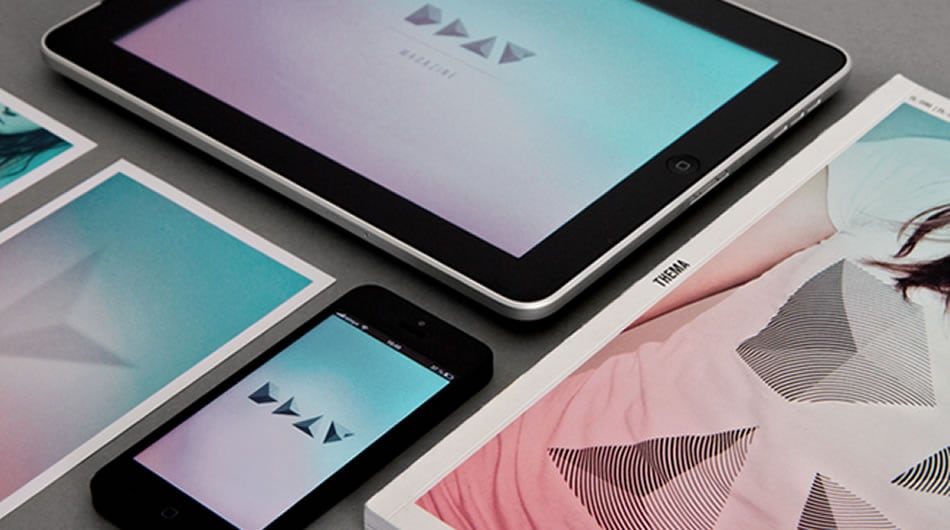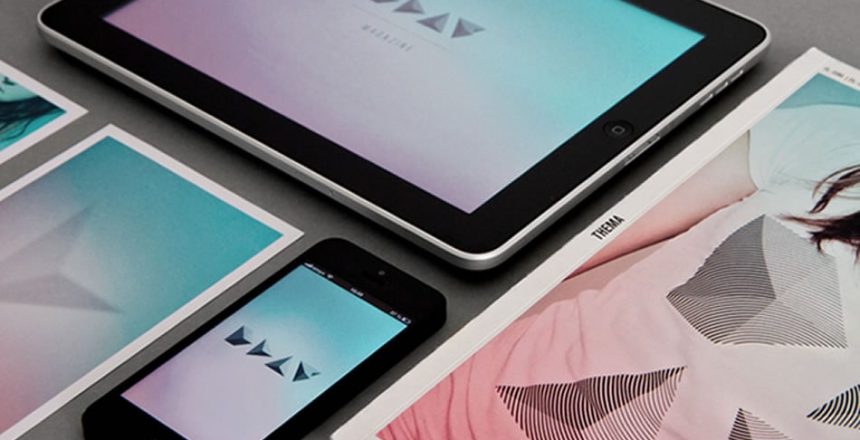‘The future is digital’, is what you hear nowadays – proclaimed in large web-friendly fonts on the cover of every business journal, newspaper or fashion magazine – or their companion websites.

The medium of print is being overturned by the apple cart of the ‘digital revolution’; yet these ‘old media’ outlets are still here, broadcasting boldly to us about how much the Internet is changing absolutely everything.
Digital as a discovery medium
The co-existence of print and digital are explored in River’s white paper Rock.Paper.Glass – the evolution of content
Digital hasn’t destroyed the value of every other media, it has in fact fuelled our curiosities to explore more – discovering new artists through a friend’s recommendation on Facebook, back issues of a rediscovered special interest magazine, or an Amazon review that convinced you that this self-help book will change my life.
The parlance shifts from ‘digital revolution’ to ‘digital first’ – with digital as the default medium of discovery. The convenience and portability of digital editions grows loyalty with magazine readers – as Weight Watchers Editor Mary Frances says: “Digital has made me a more loyal consumer.”
Perhaps the medium is no longer the message. Barry McIlheney from the PPA believes “The print vs digital war isn’t valid. People want quality content. It matters less to them what device it’s delivered on.”
From digital to print: ASOS and Net-a-Porter
And so another, lesser, phenomena has been unfolding behind the scenes – shifting from digital to print.
Some of the most successful premium retail brands have used print to build and grow a new client base targeting the affluent consumer, a fish hard to catch in the ocean of digital content. A magazine, as my print-loving colleagues often wax lyrical, can be an objet d’art yet also a commercially potent opportunity to reach engaged customers who want to buy.
ASOS and Net-A-Porter both have a large customer base for a direct mail ‘catalogue’. ASOS’s circulation makes it the eighteenth largest magazine title in the UK, just behind stalwart Glamour. For these savvy, and media cynical, consumers, let’s create a brand magazine that doesn’t feel like it’s selling to you.
With the directive to bring readers back online to buy, these brands have calculated how to join the dots, using Augmented Reality (AR) overlays and ‘shop the issue’ apps to allow readers to go from bath time bliss to purchasing that little black dress with one swift click.
Conversely, companion digital editions like the ASOS digital magazine make the user experience feel more like browsing a magazine than online shopping. Grazia’s ‘shop the app’ tablet edition also explore this rich fertile ground between the magazine experience and online commerce.
Net-a-Porter has taken the value proposition a step further with the newsstand launch of Porter – a paid magazine creating brand value within an editorial context. Net a Porter was critiqued for dabbling in print, however, their strategy is to grow not just as a marketplace but as a brand, using editorial content to raise its stature. The brand has invested in high quality content, using specialist journalists to create authentic stories linked to products and supporting the lifestyle values of its audience.
It’s appeal, and indeed viability, may be somewhat niche, but it’s an interesting way to create exclusivity and perceived value by offering the ‘super customer’ a complimentary copy of the magazine. Though the jury’s out over whether this type of editorial will generate 400,000 copy sales, if just a handful of reader buys a £1,290 little black dress through its mobile shopping app and become customers, the investment pays off.
Augmented Reality technologies such as Layar (recently acquired by the global market leader Blippar) provide this digital overlay of interactivity –the planning and execution is a sizeable task. Catalogue overlords Argos are using the technology to make their entire catalogue shoppable.
Digital for personalisation
Digital printing technologies have allowed print to become a personalized tool for creating delightful, tangible experiences. From personalized calendars giving more longevity to your holiday snaps than a Facebook album, or small print runs like The Newspaper Club to create a memorable newspaper for your special event or a beautiful publication to sell . This democratisation of print allows non-professional publishers to create and reach readers, previously only in the vanguard of those with access to commercial print presses.
Digital to print: closing the loop
The digital to print phenomena is about creating a virtuous circle, using the unique characteristics of different media types to compliment the user experience in different contexts. Sometimes a printed product may be more delightful, engaging and convenient than a website. For e-commerce businesses, finding fun, user friendly methods to entice and connect the customer back to its website is crucial to close the loop, acting as a lasso to bring the reader back in store, and convert reading into buying.
Download the white paper: Rock.Paper.Glass – the evolution of content



